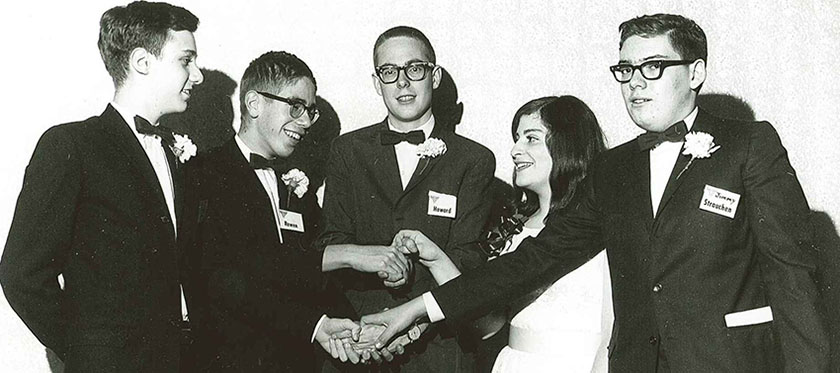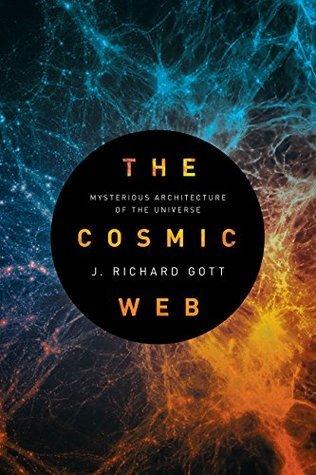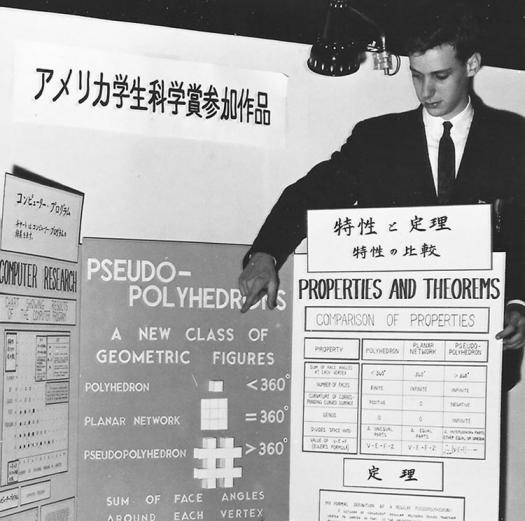Science is chasing down questions only you would ask

J. Richard Gott, a Westinghouse Science Talent Search 1965 alum, published “The Cosmic Web: Mysterious Architecture of the Universe” in January. J. Richard’s astronomy passion from 8-years-old — and his high school STS project — led him to explore how the universe is structured.
The book explores how astrophysicists deciphered the structure of the cosmos. The idea of a sponge-like structure of the universe came to J. Richard from his STS science project, where he invented sponge-like polyhedra.
There is a lot of talent out there waiting to be tapped if the right opportunities would only appear. That’s what the Science Talent Search is trying to encourage.
He is also known for “Time Travel in Einstein’s Universe: The Physical Possibilities of Travel Through Time” and “Sizing Up the Universe: The Cosmos in Perspective.”
Read the interview below to learn more about how J. Richard’s STS project inspired his latest book.

STS PROJECT INSPIRED THE BASIS FOR HIS BOOK: The idea of a sponge came to me from my STS high school science project, where I invented a number of sponge-like polyhedra.
STS AS A CONFIDENCE BOOSTER: STS encouraged me to enter a STEM field. The scholarship paid for half of my Harvard education.
And most importantly, my project led me to the sponge-like polyhedron idea, which, surprisingly, would later become important in my astronomy work.
My project focused on the structure of metallic sodium. I also did X-ray diffraction work to show that sodium had the body-centered structure. This project won second place in the Westinghouse contest. I was also selected to present this project at the Japanese Science Fair in Tokyo.
When I submitted my research to the American Mathematical Monthly for publication, I found out from the referee that three of these structures had been found before in 1926 by Petrie and Coxeter, but four of them were new, so the article was publishable. It was my first published scientific paper.
MEETING OTHERS WITH AN INTEREST IN SCIENCE: At STS, I met President Johnson in the Oval Office, Dorothy Schriver (who served as program director of STS for many decades), and my future Harvard freshman roommate Artie Frankel.
Take the time to do original research of your own. Research is a great way to see if you enjoy it.
Most memorably, I met Glenn Seaborg, discoverer of plutonium, who was one of the judges. Years later, when they asked me to become chair of the judges for the contest, I had the pleasure of working with him as a judge for many years.
Among the 1965 winners was Ray Kurzweil, who had a computer voice project. He later developed the Kurzweil reader for the blind (Stevie Wonder was the first client). Ray has become a famous futurist.
Help encourage the next J. Richard Gott into STEM. Join the Society today.

AN ASTRONOMER SINCE AGE 8: I was an amateur astronomer in high school, where we had a very active junior astronomy group in Louisville, Kentucky.
When I got interested in math and physics it was natural for me to turn to astrophysics, which dovetailed with my love of astronomy.
ADVICE TO YOUNG PEOPLE INTERESTED IN STEM: Take the time to do original research of your own. Research is a great way to see if you enjoy it, and it may lead you to an exciting career in science. Scientific research is exciting, and there is nothing like doing it to prepare for it.
As an STS judge, seeing clusters of winners occurring around the country, often motivated by a great teacher, I realized that many young people around the country, from all backgrounds, would be great at doing research if only they had some encouragement and gave it a try.
There is a lot of talent out there waiting to be tapped if the right opportunities would only appear. That’s what the Science Talent Search is trying to encourage.

DESCRIBING THE MAKEUP OF THE UNIVERSE: In “The Cosmic Web,” I describe how a generation of theorists and observers discovered the large-scale architecture of the universe.
The American school of cosmology favored a model where isolated galaxy clusters grew in a single low-density background, like meatball soup. The Soviet school favored a model where galaxies lived on a giant honeycomb punctuated by empty voids.
I realized both scenarios were inconsistent with the new theory of inflation, in which galaxy clustering started from tiny random quantum fluctuations in the early universe.
Inflation was a powerful new theory relying on a period of explosive expansion in the early universe to explain the large size of the universe and near uniformity of the cosmic microwave background. For such random fluctuations, positive and negative fluctuations would be symmetric, so the geometry of the higher- and lower-than-average density regions would have to be identical.
A sponge is something whose insides and outsides can be identical. This leads to a structure where clusters of galaxies were connected by filaments of galaxies and voids were connected by tunnels — a structure we now call the Cosmic Web — which has been verified in many studies.
I found that a sponge-like topology worked. A sponge is something whose insides and outsides can be identical. This leads to a structure where clusters of galaxies were connected by filaments of galaxies and voids were connected by tunnels — a structure we now call the Cosmic Web — which has been verified in many studies.
I’m currently working on a new book with Neil deGrasse Tyson and Michael Strauss, called “Welcome to the Universe.”
REVIEWS AREN’T BLACK AND WHITE: Sometimes a reviewer will offer a new insight about your own life.
In reviewing “The Cosmic Web” for Nature, Michael Blanton said: “Gott’s journey shows how scientists can be so motivated by their earliest obsessions that they persist in pursuing them — and how unique obsessions can let them bring something new to the crowded table of ideas … This book is a reminder of what drives us, the value of chasing down questions only we would ask, and how circuitous that chase can be.”
Try to chase down the questions only you would ask — it’s good advice.


